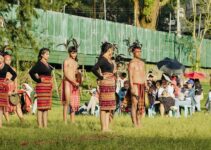When European colonizers arrived in North America, they drastically altered the political landscapes of indigenous communities. Colonialism brought about significant changes in how indigenous people governed themselves and interacted with outside powers. The impacts of colonialism on indigenous political structures and systems are complex and far-reaching. This introduction will explore the ways in which colonialism reshaped indigenous political landscapes, from the imposition of colonial governments to the erosion of traditional governance structures. By understanding the changes brought about by colonialism, we can gain insight into the ongoing struggles of indigenous communities for self-determination and political sovereignty.
Key Takeaways
- Indigenous communities experienced displacement and dispossession from their ancestral lands, leading to the breakdown of traditional societal structures and the erosion of indigenous political systems.
- The imposition of colonial governments marginalized traditional leaders and diminished indigenous autonomy, resulting in resistance movements to preserve sovereignty and resist foreign governance structures.
- The erosion of indigenous political structures occurred through the disintegration of traditional indigenous political systems, the disruption of power and authority balance, and the replacement of indigenous practices with cultural assimilation.
- The loss of land and resource rights resulted in forced displacement from traditional territories, economic deprivation, and the struggle to regain control over land and resources, impacting political and social structures.
Displacement and Dispossession
The displacement and dispossession of indigenous peoples resulted in significant changes to their political landscapes. When colonial powers forcibly removed indigenous communities from their ancestral lands, it created a profound cultural impact. The social upheaval caused by these actions led to the breakdown of traditional societal structures and the erosion of indigenous political systems. With their displacement, indigenous peoples often found themselves in unfamiliar territories, disrupting their established ways of governance and communal organization. This upheaval also led to the loss of cultural practices, languages, and spiritual beliefs, further impacting their political identity and cohesion.
As a result of these disruptions, indigenous political landscapes underwent a transformation, as traditional power structures were destabilized and new forms of leadership emerged in response to the challenges posed by displacement and dispossession. This paved the way for the imposition of colonial governments, which sought to exert control over the indigenous populations and further altered the political dynamics within these communities.
Imposition of Colonial Governments
Imposing colonial governments drastically affected indigenous political landscapes, fundamentally altering power dynamics and governance structures. The impact on leadership was profound as traditional indigenous leaders were often marginalized or replaced by colonial authorities. This disruption led to a loss of indigenous autonomy and decision-making power, further entrenching colonial control. The imposition of colonial governments also sparked various resistance movements as indigenous communities fought to preserve their sovereignty and customary systems of governance. These resistance movements were a direct response to the oppressive nature of colonial rule, with indigenous leaders and communities actively resisting the imposition of foreign governance structures. The table below provides a snapshot of the key changes brought about by the imposition of colonial governments:
| Impact on Leadership | Resistance Movements |
|---|---|
| Marginalization of traditional leaders | Indigenous communities fought to preserve their sovereignty |
| Loss of indigenous autonomy | Active resistance to oppressive colonial rule |
| Diminished decision-making power | Efforts to resist the imposition of foreign governance structures |
These profound shifts in leadership and the emergence of resistance movements illustrate the far-reaching consequences of colonial government imposition on indigenous political landscapes.
Erosion of Indigenous Political Structures
Under colonial rule, you've witnessed a gradual erosion of indigenous political structures as external authorities imposed new systems of governance. The imposition of colonial governments led to the disintegration of traditional indigenous political systems, disrupting the balance of power and authority within indigenous communities. This erosion has been perpetuated by cultural assimilation, where indigenous political practices, beliefs, and values have been supplanted by those of the colonizers. As a result, indigenous political structures have struggled to maintain their autonomy and relevance in the face of colonial dominance.
Moreover, the erosion of indigenous political structures has contributed to social stratification within indigenous communities. The introduction of colonial governance systems often favored specific indigenous groups or individuals who aligned with the interests of the colonizers, leading to internal divisions and power disparities within indigenous societies. This social stratification further weakened the cohesiveness of indigenous political structures, making it increasingly challenging for these systems to effectively represent and serve their communities.
Loss of Land and Resource Rights
As a result of colonial rule, you've experienced a significant loss of land and resource rights, profoundly impacting indigenous political landscapes. The impact on sovereignty has been deeply felt, as traditional territories have been forcibly taken, leading to a disconnection from ancestral lands. The loss of land and resource rights has not only resulted in economic deprivation but has also led to a profound cultural heritage loss. Your community's ability to maintain and pass on traditional knowledge and practices has been severely hampered, as the land is intricately linked to cultural identity and spiritual beliefs. This loss has disrupted the balance and harmony that existed between your people and the land, causing a fundamental shift in your political and social structures. The struggle to regain control over land and resources continues to be a central issue in indigenous political landscapes, as it is intricately tied to the preservation of cultural heritage and the restoration of sovereignty.
Repercussions on Indigenous Governance
In the wake of colonialism, you have witnessed a significant disruption in indigenous governance due to the imposition of foreign administrative structures and policies. The interference in decision-making processes has undermined the traditional systems of leadership and authority within indigenous communities. Colonial powers often imposed their own governance models, sidelining indigenous leaders and decision-making bodies. This interference has led to a loss of autonomy and self-determination for indigenous peoples, as decisions that once fell under their purview are now subject to external influence.
Cultural assimilation, another repercussion of colonialism, has further complicated indigenous governance. The imposition of foreign legal and administrative frameworks has eroded traditional governing practices, leading to a dilution of indigenous customs and norms. As a result, indigenous governance structures have had to adapt to the pressures of assimilation, often at the expense of their autonomy and cultural identity.
Consequently, the repercussions of colonialism on indigenous governance continue to reverberate, posing challenges to preserving traditional decision-making processes and cultural integrity. Efforts to reclaim and revitalize indigenous governance systems are crucial in restoring autonomy and self-governance to indigenous communities.
Frequently Asked Questions
How Did Colonialism Impact the Role of Indigenous Women in Political Structures?
Colonialism significantly impacted the role of indigenous women in political structures. Gender roles and leadership dynamics were drastically altered as a result. Indigenous women, who once held significant power and influence, were often marginalized and excluded from decision-making processes. Their traditional roles as leaders and decision-makers were supplanted by colonial systems, leading to a shift in power dynamics within indigenous communities. This had lasting effects on the political landscapes of indigenous societies.
What Were the Environmental Consequences of Colonialism on Indigenous Communities?
Colonialism brought environmental degradation to indigenous communities, impacting their traditional ways of living. Despite this, indigenous resilience has been evident as communities strive to protect and restore their lands. The consequences of colonialism on the environment have been profound, but indigenous groups continue to fight for ecological justice and sustainable practices.
How Did the Imposition of Colonial Governments Affect the Spiritual and Cultural Practices of Indigenous Peoples?
When colonial governments were imposed, they significantly impacted indigenous peoples' spiritual and cultural practices. The resilience of indigenous spirituality was tested, but many communities persevered, adapting and finding ways to preserve their cultural traditions. Despite the challenges, indigenous peoples have shown remarkable spiritual resilience and a strong commitment to preserving their cultural heritage. Colonialism may have tried to change these practices, but the enduring strength of indigenous spirituality and cultural preservation remains evident.
What Strategies Did Indigenous Communities Develop to Resist the Erosion of Their Political Structures During Colonialism?
Facing colonial impositions, indigenous communities developed various resistance strategies to safeguard their political structures. Through community resilience, they upheld traditional governance systems, often adapting to the changing circumstances. Utilizing diplomatic negotiations, armed resistance, and legal challenges, they fought to maintain autonomy. The collective strength and unity of indigenous communities became a powerful force in resisting the erosion of their political structures during colonialism.
How Did Colonialism Impact the Relationship Between Different Indigenous Groups and Their Traditional Territories?
The impact of colonialism on intertribal relations and traditional territories was significant. Traditional boundaries and alliances were disrupted, leading to conflicts and power struggles among indigenous groups. The division of territories and forced migrations further strained relationships. As a result, indigenous communities faced challenges in maintaining their traditional connections to the land and in navigating the changing dynamics between different groups. Colonialism fundamentally altered the interconnectedness and balance of power within indigenous political landscapes.
Conclusion
In conclusion, colonialism didn't just alter indigenous political landscapes, it uprooted them like a violent storm, leaving behind shattered traditions and broken governance structures. The displacement and dispossession of indigenous peoples, along with the imposition of foreign governments, eroded their political autonomy and rights to their ancestral lands. The repercussions of colonialism continue to haunt indigenous communities like a looming shadow, casting a dark cloud over their ability to govern themselves.



